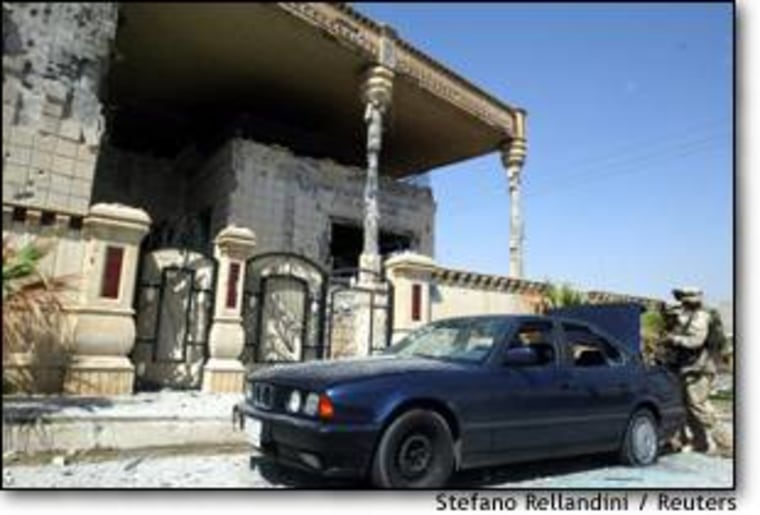The U.S. military used dental records, X-rays and visual identification to confirm that the sons of ousted Iraqi leader Saddam Hussein were killed in this week’s raid, and a forensic expert said DNA tests could provide additional data for solving future cases.
Multiple methods were used to make sure Odai and Qusai Hussein were indeed among those killed in Tuesday’s six-hour firefight in the northern city of Mosul, Army Lt. Gen. Ricardo Sanchez told reporters in Baghdad on Wednesday.
The bodies were flown by helicopter to Baghdad International Airport and identified independently by four senior Iraqi detainees familiar with Saddam’s sons, Sanchez said.
He also said their teeth were compared with dental records for Qusai and Odai — resulting in a 100 percent match with Qusai’s records, and a 90 percent match with Odai’s. “This was limited only because injuries to the teeth made a perfect match impossible,” Sanchez said.
Old scars on Odai’s body also were consistent with X-ray records of his injuries in a 1996 assassination attempt, he said.
Two other bodies were recovered after the battle, including a person who may have been a bodyguard and perhaps Qusai’s 14-year-old son, Mustapha, the sources told NBC.
Samples were taken from the bodies for DNA testing after they were flown from Mosul, the Associated Press quoted unidentified officials as saying. DNA from the victims could be matched with samples from other members of Saddam’s family. Military spokesmen have hinted that U.S. officials possess a reference sample of Saddam’s DNA.
“We will continue with the autopsies on the bodies to get final conclusive evidence,” Sanchez told reporters. He said a decision on the final disposition of the four bodies was “yet to be made.”
The testing process
If the process of DNA sample collection and testing followed the typical scenario, the samples would be collected quickly but carefully, said Victor Weedn, who helped develop the Armed Forces DNA Identification Laboratory in 1990 and is now director of biotechnology and health initiatives at Carnegie Mellon University.
It’s possible to do quick genetic testing on the scene, using portable equipment adapted for forensic purposes, he said. But he also speculated that samples would be flown to Rockville, Md., for more extensive testing at his former laboratory.
He stressed that he had no inside knowledge about the handling of samples from Saddam’s sons, but said “it would seem to me that you would most want to do the testing in a pristine environment, with people who are used to doing it with the instruments on hand.”
There have been several false alarms on the demise of Saddam and/or his sons, so by now the military likely has been well-trained in how to handle samples for DNA testing.
“The tissues have to be adequately documented and preserved,” Weedn said. “It’s difficult to do in a war scenario, but because of the early questions on the ID of Saddam, I imagine that the military has increased their awareness of these as issues. We are told that there are forensic guys in country to help with these issues.”
He emphasized that “the military has very significant capabilities to perform this DNA testing.”
“If you’re really set up for it and you start today, conventional DNA testing could really be done in a day,” Weedn said. “Mitochondrial [DNA testing] would take several weeks.”
Mitochondrial DNA, extracted from outside the nucleus of the cell, can be used to trace maternal ancestry.
Once the results are in hand, forensic investigators would compare them with a sample of the family’s DNA. The closer the relationship, the more reliable any match would be.
“If you had Odai and Qusai, you’d want them as references for Saddam and others,” Weedn said. “You will find that with all this testing on bodies and remains from future recoveries, there’ll be kindred relations that you’ll want to put together, and these will be additional puzzle pieces ... To the extent that it is a firm ID now, these samples would be useful for identifying other kindred, such as the father.”
NBC News’ Tammy Kupperman, Jim Miklaszewski and Robert Windrem contributed to this report.
